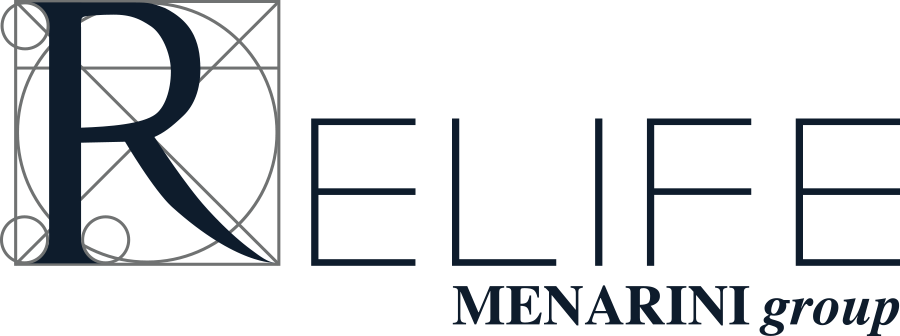AESTHETIC MEDICINE / RESURFACE
REsurface
MULTILEVEL SKIN
RESURFACING
When aging, acne or sun exposure may leave the face with blotches, scars, wrinkles, or lines. Using Definisse™ Peel to resurface your skin may help your skin look younger and revitalised.
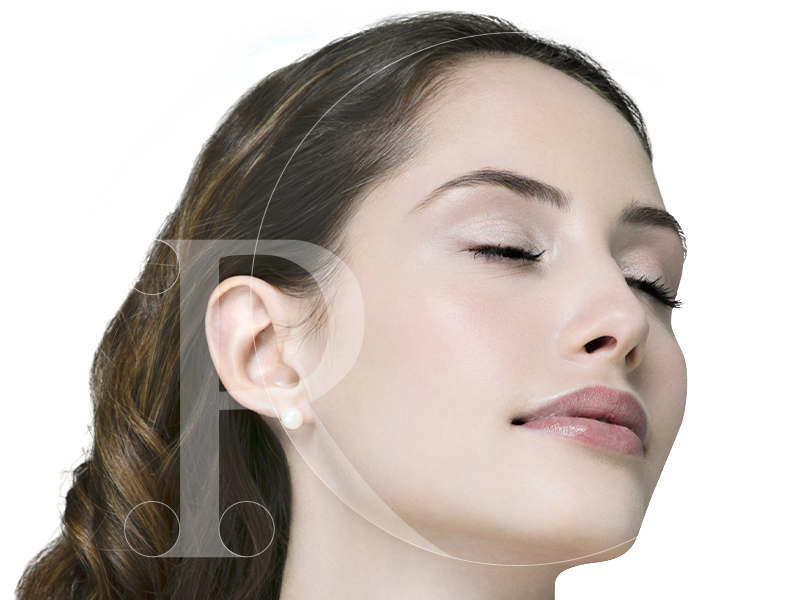
A 'peel' is a procedure that induces the destruction of epidermal areas and/or layers of the dermis and subsequently triggers a regeneration process. Skin resurfacing with a chemical peel is a powerful tool that can restore a more youthful and rested appearance to the aging face. It is also used to manage other skin conditions with the aim of evening out pigmentation and reducing textural unevenness. Skin resurfacing with chemical peels ultimately aims to enhance a patient's appearance and thus, self-esteem.(1)
The peel is mainly used in the aesthetic field(2) in cases such as keratosis and stretch marks, dyschromia, acne & skin laxity.(2) The peeling procedure is also a valuable treatment method for aging skin, photo aging, acne scars and melasma and will also serve to improve skin vitality, tone and texture.(2)
Peels can be classified into the following categories:
The aim is to remove excess build up of skin cells, which in turn stimulates cell turnover, resulting in a more polished, smoother, translucent surface(3).
The quest to preserve a youthful appearance has persisted for centuries and recent advances in dermatology have catalysed the re-emergence of non-invasive techniques. Non-invasive modalities such as lasers, chemical peels, and microdermabrasion remain viable alternatives to successful non-invasive facial revitalisation.(4)
PEEL CLASSIFICATION
There are three levels of chemical peel: superficial, medium & deep. The level of peel that will be used is determined by a number of factors such as the desired outcome, the base condition of the skin and the acceptable down time after a peel.
- Superficial peel eliminates the superficial cells of the epidermis by causing the necrosis of the epidermis from granulose to basal layer. These peels stimulate a rapid regeneration of epidermis, eliminate spots, fine lines and improve wrinkles through the promotion of fibroblasts and regeneration of fibers of elastin and collagen.
- Medium peel is recommended for skin that is more damaged as it will penetrate a deeper. Improvements can be seen in the middle layers of the skin.
- Deep peel: this procedure is implemented to eliminate deep wrinkles, acne scars and signs of actinic keratosis. Since the deep peeling can cause hypopigmentation or skin whitening and skin changes it is recommended to use combinations of deep and medium peeling.(5)
DefinisseTM Peel Program
The Definisse™ Peel Program is a superficial peel and can be used to treat a number of skin conditions which include:(8,9)
- Photo-ageing
- Superficial wrinkles
- Post-acne skin imperfections
- Superficial scars
- Stretch Marks
- Marks caused by photo ageing
- Melasma from pregnancy or contraceptives
The Definisse™ Peel program is a simple 3 step program that allows the physician choose a pre-peel and peel that is most suitable to their patients requirements. For more information please contact your local Aesthetic physician.
Ready to use-3-step peel program
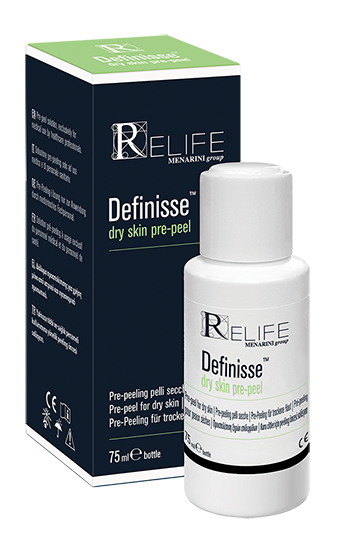
DefinisseTM dry skin pre-peel
For thin, dry and sensitive skin. It cleanses the skin gently and evens out skin’s pH(6)
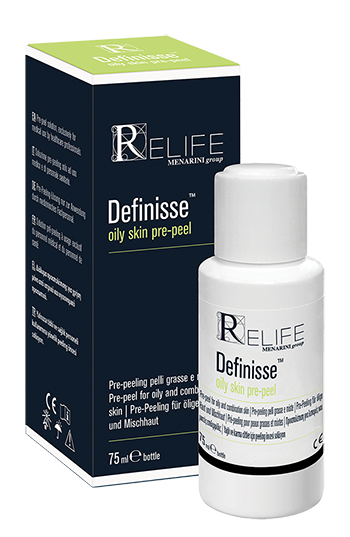
DefinisseTM oily skin pre-peel
For oily and acne-prone skin. It cleanses the skin with a degreasing effect and evens out skin’s pH(7)
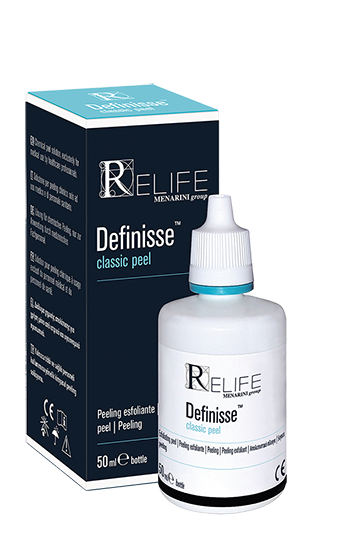
DefinisseTM classic peel
In cases of: photo-ageing; superficial actinic wrinkles or expression lines; post-acne skin imperfections; superficial scars; seborrhoeic skin; stretch marks(8)

DefinisseTM lightening peel
In cases of: localised hypermelanosis; melasma (chloasma) from pregnancy or contraceptives; melanotic pigmentation; marks caused by photo-ageing(9)
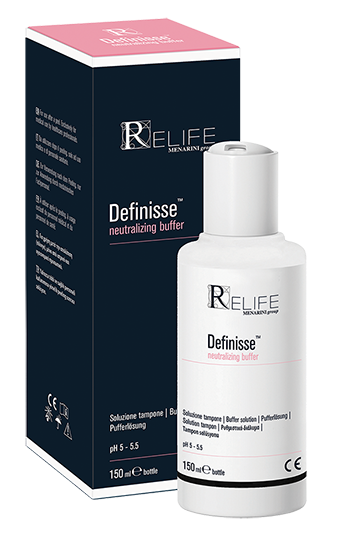
DefinisseTM neutralizing buffer
It effectively but delicately neutralizes acids that remain on the skin after a peel, maintaining the skin’s pH(10)
(1) Samargandy, S. (2021) Skin Resurfacing Chemical Peels.
(2) O'Connor, A. et al. (2018) Chemical Peels: A Review of current practice. Australasian Journal of Dermatology. 59, 171-181
(3) Katie Rodan, MD, Kathy Fields, MD, George Majewski, and Timothy Falla, PhD Skincare Bootcamp: The Evolving Role of Skincare Plast Reconstr Surg Glob Open. 2016 Dec; 4(12 Suppl): e1152. Published online 2016 Dec 14. doi: 10.1097/GOX.0000000000001152
(4) Meaike JD et al. Noninvasive Facial Rejuvenation. Part 3: Physician-Directed-Lasers, Chemical Peels, and Other Noninvasive Modalities. Semin Plast Surg. 2016 Aug; 30(3): 143-50.
(5) Merita Grajqevci-Kotori and Allma Kocinaj Exfoliative Skin-peeling, Benefits from This Procedure and Our Experience Med Arch. 2015 Dec; 69(6): 414–416. doi: 10.5455/medarh.2015.69.414-416
(6) Definisse™ dry skin pre-peel, Instruction for Use
(7) Definisse™ oily skin pre-peel, Instruction for Use
(8) Definisse™ classic peel, Instruction for Use
(9) Definisse™ lightening peel, Instruction for Use
(10) Definisse™ neutralizing buffer, Instruction for Use
IR-WEB-80-2021 IE 21068 | Date of Use October 2021
FIND A CERTIFIED TRAINED PHYSICIAN NEAR YOU

